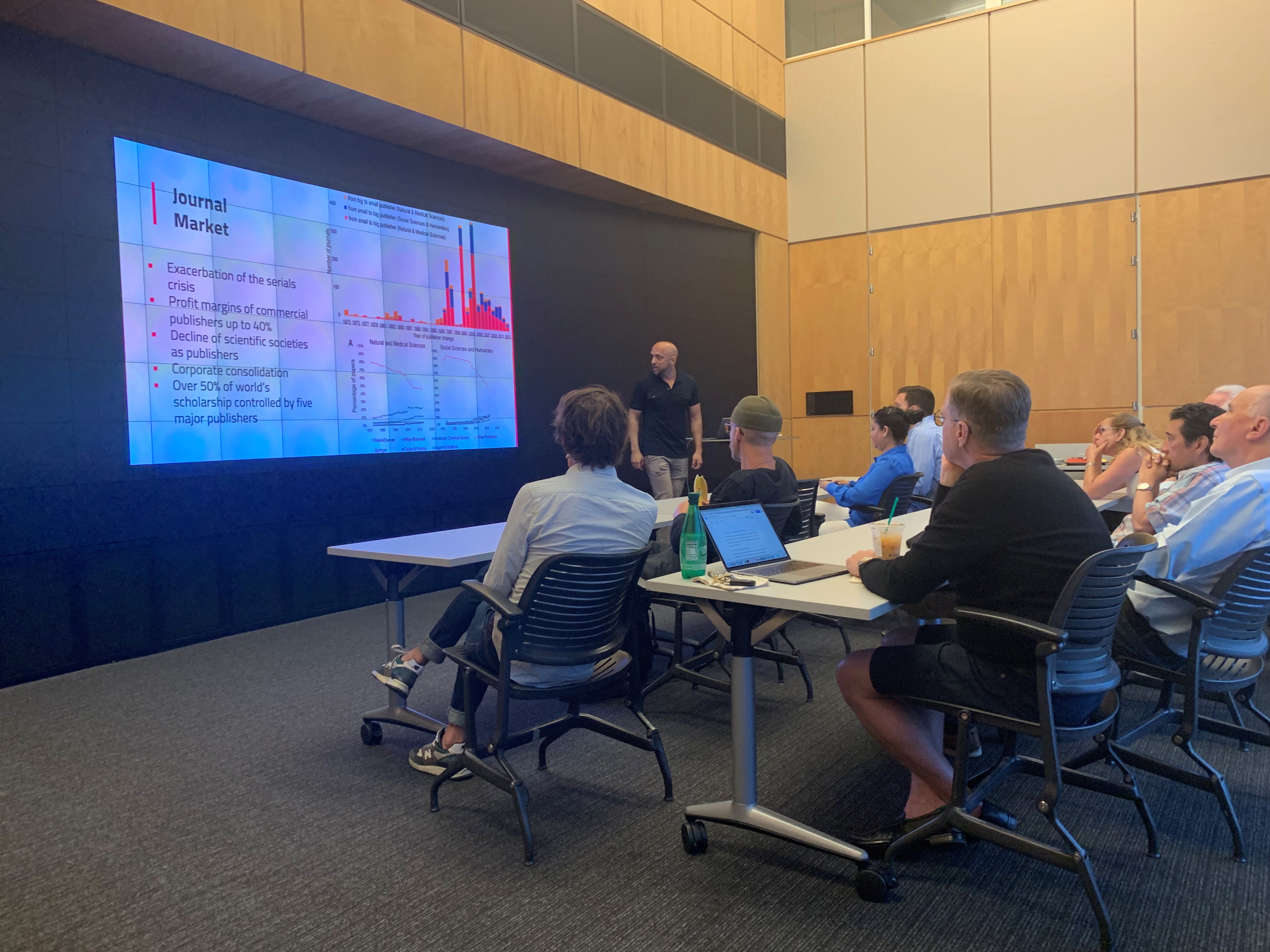Working at CERN has been—in equal parts—inspiring, challenging and humbling
Working at CERN has been—in equal parts—inspiring, challenging and humbling
Meet Kamran, Section Leader for Open Science at CERN
Hi Kamran, tell us a little about yourself and what brought you to CERN.
Most of my professional career has been focused on addressing the inequity in global access to scientific information. The disparity in global access to research has exacerbated socioeconomic inequity, pushed researchers in under-resourced communities to the margins of global science, and comes at a massive human cost. It is suboptimal for scientific progress—particularly in the digital age—and is also a major social justice issue.
I’ve worked to address this systemic problem throughout my career in a number of capacities and contexts, with organizations like the World Bank, U.S. National Academies and USAID. More recently, while completing my PhD at Stanford University in Cooperative Models for Open Access, I also worked for the non-profit publisher Annual Reviews, where I helped to pioneer a new transitional model for Open Access to research information called ‘Subscribe to Open’.
My work through recent years has drawn significant inspiration from the incredible work done at the CERN Scientific Information Service (SIS): in particular more recently in building and hosting the Sponsoring Consortium for Open Access Publishing in Particle Physics (SCOAP3). This project has set the model for what is possible if libraries and publishers are willing to work together to advance common goals in accelerating science. So when an opportunity arose to work within this amazing team, I jumped!
What do you do at CERN today?
My official role within SIS is as Section Leader for Open Science, which includes a portfolio of activities and projects: including SCOAP3, the development of a new service for the preservation/documentation of experimental analyses (CERN Analysis Preservation managed by Pamfilos Fokianos), and CERN’s contribution to the European Project FREYA (managed by Artemis Lavasa), which aims to build infrastructure for persistent identifiers as a core component of open science.
A core objective in this role is to work with colleagues in IT to foster an ecosystem of services and technologies that meet the needs of the researchers and users at CERN, while also setting a global example of how open science can be conducted. I am confident that just as CERN has pioneered new frontiers in research, the development of the world wide web, new models for open access (among others), that we can shape the future of how open science can accelerate scientific and human progress in the years to come.
What is working at CERN like for you?
Working at CERN has been—in equal parts—inspiring, challenging and humbling. I am consistently inspired by the brilliance of the people who work here—in my team, other colleagues in my Group, and of course the larger community of researchers and scientists. Given the scale of CERN, the complexity of the experiments and their varying needs and perspectives, it has been a steep learning curve to understand how best to serve them—an ongoing uphill climb which will take time to summit! I am also just immensely humbled by both the intellectual and personal generosity of the community at CERN, who have been so kind and welcoming and created a support system for me to begin to contribute to the mission of the SIS Group and CERN as a whole. I’m looking forward to building a network of colleagues and friends across the Organization in the years to come!
What have been the main hurdles or challenges you encountered along the way?
Although the scale and complexity of CERN is certainly a challenge, I have felt supported in learning about the organization by my community of colleagues. That being said, my transition to CERN did not come without its set of challenges. Moving from the perpetual sunshine of California to Geneva in November was admittedly a bit of an adjustment; let’s just say I’m eagerly awaiting the spring! The main challenge has been to help my spouse get adjusted to life in a new country. I’m grateful to CERN for organizing an event in a few weeks to help the spouses of CERN employees get to know one another and understand the resources that are available to them. It also became obvious that we both really should take this opportunity to learn to speak French, and again I’m grateful to CERN for providing language services to employees (I’m in my 3rd week of French Integration classes!).
What advice would you give potential applicants?
The application process for CERN is admittedly somewhat intensive, but is much less intimidating than one might expect. Although the first part of the process is conducted through an online platform, it retains the human element, and allows CERN to get a good preliminary sense of you as a candidate and whether you might be a good fit for the position. My advice for that stage is to relax and be yourself. If you advance to the subsequent stages, know that the interview process at CERN is again an opportunity for you to position yourself within the Group you are applying to. I’d encourage candidates to research the Group/Team they are applying to be a part of, and learn as much about them—their respective missions, projects, people— as you can. That way you can come to the interview prepared to talk about the contribution you can make to the team itself, and the value you can add to advancing CERN’s overall goal of accelerating science.
